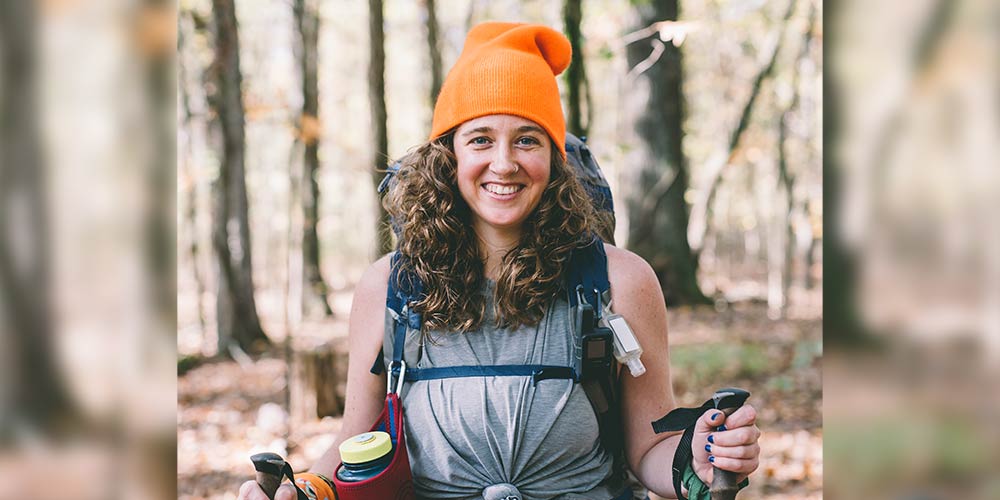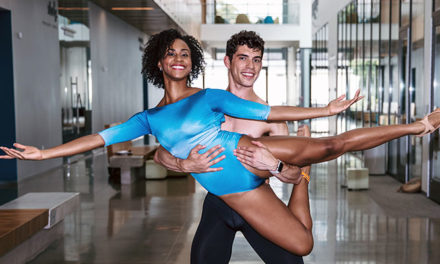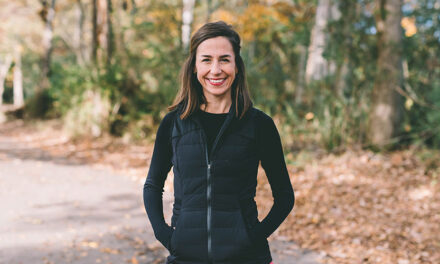By Colleen May
Photo by Tindall Stephens
Extending across 14 states and measuring just shy of 2,200 miles, thru-hiking the Appalachian Trail is certainly not for the faint of heart. But, for Megan Travis, 38, it had been a long-time dream. So, on April 18, 2022, the elementary school art teacher traded in the hustle and bustle of city life for a nearly six-month-long northbound journey through drastically changing climates and terrain. Now, months off the trail, Megan is thankful for the experience and confident this won’t be the last of her adventures.
Passion, Practice, and Prep-Work
Megan’s love for hiking sprung up in 2008 after she and her husband took a trip out west to the Grand Canyon National Park. “That was my first official hike,” she recalls. “It was tough, and it kicked my butt, but I loved it.” She then began exploring different trails around the Memphis area, including Stanky Creek in Nesbit Park and Meeman-Shelby Forest.
“I found hiking to be cathartic,” Megan adds. “It’s medicine, being outdoors and being able to have fresh air that often, you’re getting so many endorphins from walking, and it feels like a meditation after a while.”
Gearing up for the Appalachian Trail, Megan and her hiking buddy, Chad, took several backpacking trips across parts of Tennessee, Mississippi, and Arkansas. Referring to them as “shakedown hikes,” the goal for each trip was to trim down their hiking equipment to the bare necessities to make packing as streamlined as possible. But, if you ask Megan, no amount of training fully prepares you for doing a thru-hike.
Finding Community on the Trail
For hikers opting for the northbound route like Megan and Chad, the official start point of the trail is Springer Mountain in Georgia, finishing at Mount Katahdin in Maine. “Each state has a unique personality terrain-wise,” Megan notes. From the rolling foothills of Georgia and North Carolina to the vast, open pastures of Virginia and the rugged landscape of Pennsylvania, there’s always a new challenge, and the breathtaking views make it all worth it. “It was a beautiful time for the foliage,” Megan comments. “The kaleidoscope of colors was fantastic…just a painting everywhere you turn.”
While physical obstacles were expected, what surprised Megan the most on the trail was the social nature of it. “You get to these peaks and vistas, and you look around, and they’re stunning…it’s such a gift to be there,” she says. “But then, you turn around after looking at the vistas and see the people who walked it with you… they’re such a meaningful part of the experience. Going back through my photographs, I’m so happy to have the magnificent views, but I wish I had taken more pictures of the people there, too, ‘cause they were such a meaningful part of the experience.”
Megan still keeps in touch with her ‘tramily’ or trail family via Zoom calls.
Desirable Changes Ahead
In the coming months, Megan would like to make it back into the classroom teaching elementary school art, ideally to share her trail experience. As for future trails, she has her sights set on becoming a “Triple Crowner” – successfully thru-hiking the top three longest trails in the United States. The two remaining are the Pacific Crest Trail and the Continental Divide. “I have faith that if I keep myself healthy and build up slowly for the next one, I can make it happen,” she says.
While Megan knows hiking over 2,000 miles isn’t everyone’s cup of tea, she hopes that it remains accessible to anyone who wishes to try it. “That was the one thing I struggled with on the trail, knowing the privilege I had being out there,” she reflects. “It’s a homogenous world that you’re in suddenly.”
Lately, Megan has been thoroughly researching different organizations striving to make hiking safer and more accessible to everyone, regardless of age, race, or gender. Megan suggests Soul Trak Outdoors, Pride Outside, BlackPackers, and Latin Hikers, among others. The American Hiking Society also has an extensive list of individual leaders and organizations aiming to make the outdoors a place of inclusivity.
Visit americanhiking.org/hiking-resources/racism-in-the-outdoors to learn more.







